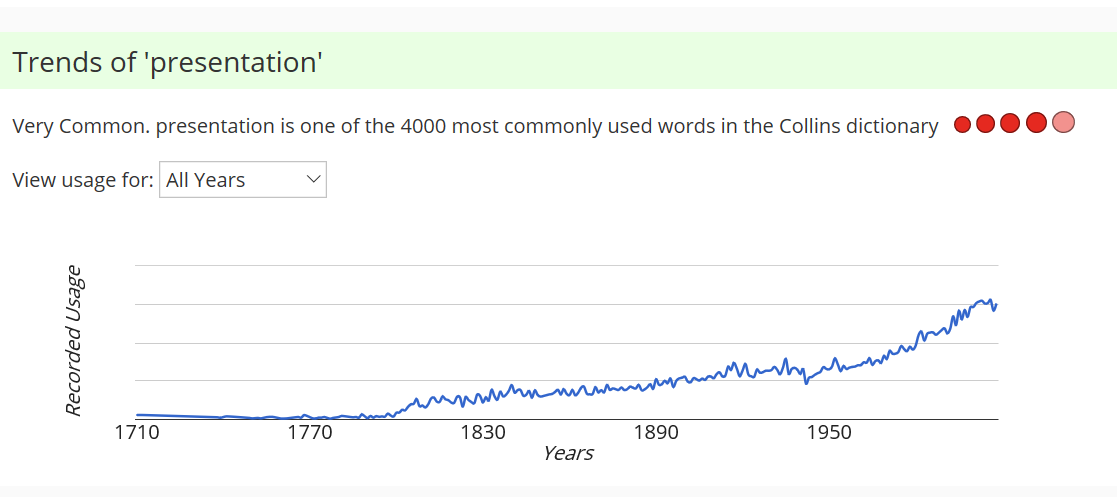Writer’s block? Tired content? When the words seem to be stuck, go to their source. Surprisingly, the dictionary might be just what you need to get those ideas flowing again.
Start by isolating the main words in your presentation. Then, spend some time researching them. When you simplify your presentation to a few main words, you can focus on the depth of meaning for just a few things rather than the breadth of the whole presentation, which can get overwhelming. To help you move past writer’s block, look at both the etymology of the word and it’s current definition.
Etymology
Etymology is the study of how words have changed over time. While some words have fairly stable meanings, most words change with the people who use them. Sometimes looking back at a word’s historical meaning can shed light on its current meaning and enrich your presentation. You can find etymologies in most collegiate dictionaries. You can also research online at etymonline.com. Another online source is collinsdictionary.com which has some unique features like word trend mapping. For example, here’s the historical trends of the use of the word “presentation.”

To see how etymologies might help drive your content, here’s a little bit of fascinating history from Oxford Royale Academy about the word “clue.”
Who knew that the word “clue” derives from Greek mythology? It comes from the word “clew”, meaning a ball of yarn. In Greek mythology, Ariadne gives Theseus a ball of yarn to help him find his way out of the Minotaur’s labyrinth. Because of this, the word “clew” came to mean something that points the way. Appropriately enough, Theseus unravelled the yarn behind him as he went into the maze, so that he could work his way back out in reverse. Thus the word “clew” can be understood in this context and in the context of a detective working his way backwards to solve a crime using “clues”. The word gained its modern-day spelling in the 15th century, a time when spelling was rather more fluid than it is today.
Definitions
Defining key terms is an important part of presenting. Especially if the terms are confusing or controversial. Take for the instance, the word “feminism.” In 2014, Emma Watson delivered a speech before the UN as an ambassador for the He-for-She Campaign, in the first moments of her speech, she says this:
“The more I have spoken about feminism the more I have realized that fighting for women’s rights has too often become synonymous with man-hating. If there is one thing I know for certain, it is that this has to stop. For the record, feminism by definition is: ‘The belief that men and women should have equal rights and opportunities. It is the theory of the political, economic and social equality of the sexes.’”
She uses the dictionary definition to reset what people might think the term means. She also makes sure that the audience moves into the rest of the speech with a common definition instead of varied individual perceptions. This is crucial not just for presentations but for any type of communication. We can clear up a lot of conflict and miscommunication if we’ll simply take time to define what we are talking about first.
The next time you are staring at that blank page or screen, stop and research your main terms. You may be surprised at how much that opens up the pathway to clearer content and communication.
We love sharing tips for how to write, design, and deliver better presentations. Ready to learn more?